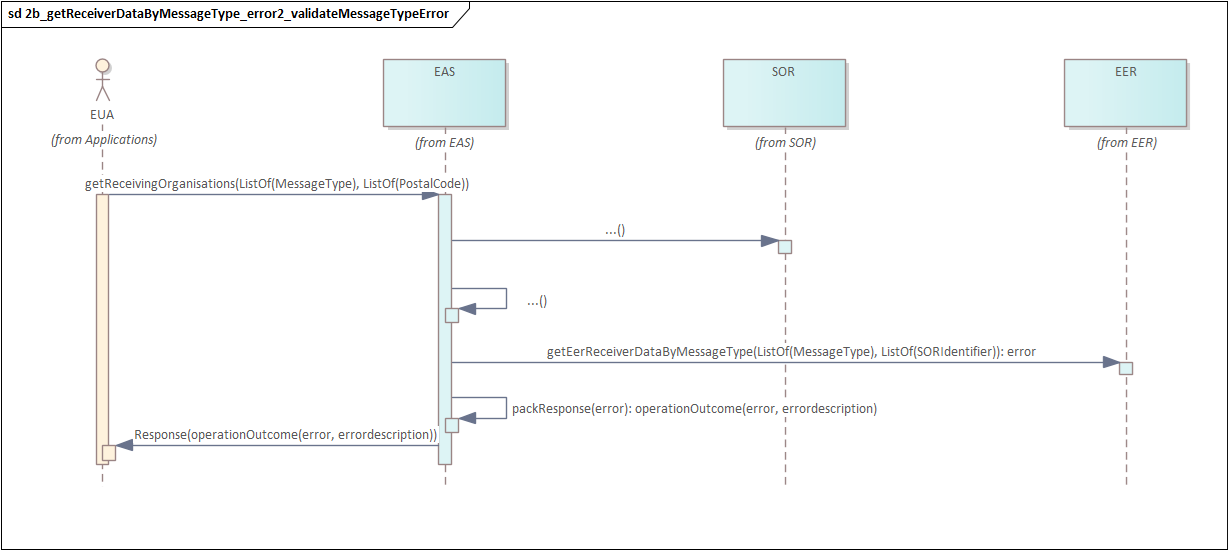EHMI Addressing Service (EAS)
2.0.0 - release
EHMI Addressing Service (EAS)
2.0.0 - release
EHMI Addressing Service (EAS), published by MedCom. This guide is not an authorized publication; it is the continuous build for version 2.0.0 built by the FHIR (HL7® FHIR® Standard) CI Build. This version is based on the current content of https://github.com/medcomdk/dk-ehmi-eas/ and changes regularly. See the Directory of published versions
This use case concerns the search for the necessary message address metadata information (like the GLN number) for recipients capable of receiving specific types of messages within an area defined by postal codes. This is relevant if it is likely the message to be sent will result in the patient having to pay a visit at the receiving organization, why it is handy that the place is relatively close to the patient home (or work) address. The sequence diagram for this case is as follows:

When EAS has received the request, the relevant organization information associated with organizations registered with an address with one of the given postal codes is obtained from SOR. With this and the type of message to be sent, the EHMI Endpoint Register (EER) is called to obtain the GLN number and other relevant information, and finally the response is packed and sent back to the caller of EAS.
This use case is conforming to this OperationDefinition:
**Be aware:** The exact name of this operation may differentiate, when it comes to the real world implementation,
but the intention is to implement a service that given the input parameters profile will produce the output parameters Profile.
Generated Narrative: OperationDefinition eas.SikrGrp1-getReceivingOrganizationByMessageTypeAndPostalCode
URL: [base]/$getReceivingOrganizationByMessageTypeAndPostalCode/
Input parameters Profile: string
Output parameters Profile:
http://medcomehmi.dk/ig/eas/StructureDefinition/EasMessagingOrganization
Should the given postal codes be erroneous or an error occur when obtaining relevant organization information for organizations registered with the given postal codes, an error response stating this is packed and returned to the caller of EAS as illustrated in the following diagram:

Correspondingly, should an error occur when calling EER to obtain the GLN number and other relevant information, an error response stating that is packed and returned to the caller of EAS as illus-trated by:
